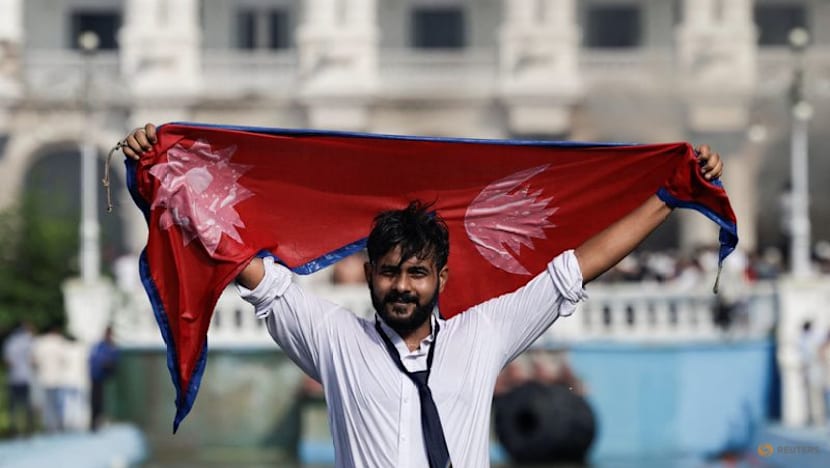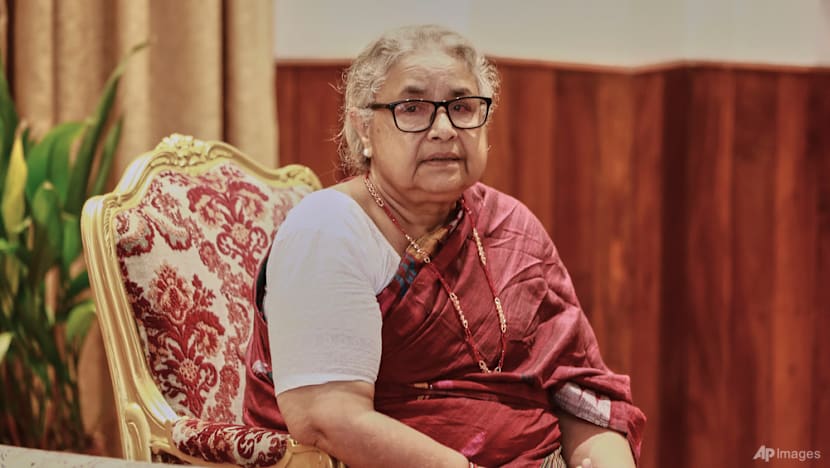Commentary: Nepal’s Gen Z protest was just the beginning of the real political struggle
Understanding what Sri Lanka and Bangladesh did after they forced out political leaders could be crucial for Nepal, says Rishi Gupta from the Asia Society Policy Institute.


This audio is generated by an AI tool.
NEW DELHI: Few could have predicted that a social media ban would spark the downfall of a government – and so quickly.
Within 48 hours, the Gen Z protests against the ban ultimately became a referendum on political corruption, culminating on Sep 9 in the resignation of Prime Minister KP Sharma Oli. Nepal is now the third South Asian country in almost as many years to have ousted political leaders by public fury.
In 2024, Bangladesh Prime Minister Sheikh Hasina resigned and fled the country after weeks of unrest that started with students opposing a job quota system. Two years earlier, Sri Lankans rejected President Gotabaya Rajapaksa and his family’s decades-long rule after the economy collapsed.
Throughout Nepal’s seven-decade modern history, protests and movements have catalysed several political transitions: Pro-democracy movements in 1959 and 1990 spurred constitutional reforms, while the 2006 People’s Movement resulted in the total abolition of the monarchy two years later, and Nepal became a democratic republic.
The protests in September were unique in that they were not calls for changes to the political system but a response to the perceived failure of the existing democratic order.
As the interim government navigates the period of national reckoning, it can learn from Sri Lanka and Bangladesh – what they did successfully as well as what failed – to prevent Nepal’s new political era from triggering yet another cycle of unrest.
A BROKEN STATUS QUO
Like in Sri Lanka and Bangladesh, the protests in Nepal were the product of widespread public disenchantment. People were frustrated with alleged authoritarian leadership styles and a perceived disregard for democratic norms.
But unlike Sri Lanka and Bangladesh, Nepal’s Gen Z anger was not directed against a single family or individual but the entirety of the country’s political apparatus.
Throughout Nepal’s transitions from a monarchy to a constitutional monarchy to a democracy, the same political players have clung on to power. The Nepali Congress, various Communist factions, and later the Maoists found ways to adapt to shifting political systems, ensuring their continued hold on power regardless of the ideological structure in place.
Gen Z protesters wanted reforms to the existing party system, which is riddled with patronage politics, power-sharing deals and instability – no prime minister in the last 17 years has completed a five-year term in office.
Constant upheaval has been neither good for Nepalese foreign policy nor its economy. One resulting failure has been high unemployment rates, which have particularly affected Nepal’s youth. The rate of youth unemployment between the ages of 15 and 25 was up to 20.8 per cent in 2024.
Yet, successive governments have lacked the incentive to create domestic jobs, as remittances from Nepalis working abroad have become more attractive. According to the World Bank, remittances received in Nepal were 26.3 per cent of its gross domestic product in 2023.
Much of Gen Z has struggled to find work, while observing children of politicians take a much easier path to employment and flaunt lavish lifestyles. This fuelled resentment and the rise of #NepoBaby posts on social media ahead of the protests.
Combined with the social media ban – and its implications for being able to communicate with family who are sending those remittances from abroad – these frustrations helped spark the uprising that ultimately toppled the Oli government.

LESSONS FROM NEXT DOOR
Nepal’s interim leader Sushila Karki has made it a priority to hold a general election and hand over power within six months. There are several lessons she can take from Bangladesh, which is set to hold elections in February 2026.
Ahead of the election, Chief Adviser Muhammad Yunus’ administration has banned all activity from former prime minister Sheikh Hasina’s Awami League, the oldest political party in Bangladesh. Critics said that outlawing this political group – regardless of its affiliation with the old Hasina regime – is a dangerous sign of potential democratic backsliding.
Banning political parties would be a sure way to ensure Nepal doesn’t get the free and fair elections that Nepalese youth have demanded.
Ms Karki is seen as an outsider to Nepal’s political establishment. She lacks any political affiliations and is the first woman to ever hold the office of prime minister, giving her administration a uniquely clean slate. Also, as the former Chief Justice – again the first woman to hold the apex role ever – Ms Karki clearly understands the judiciary.
The new government needs to reflect upon protestors’ demands, carry out reforms transparently, and appoint new leadership based on merit, not nepotism.
At the same time, her transitional government has set an ambitious target of holding elections by early March 2026.
It’s not as simple as calling for elections. Reforms will be needed to ensure electoral fairness and transparency, an effective anti-corruption mechanism, digital transparency and other requirements for any resulting elected government to have credibility.
All this may slightly delay the process, as seen in Bangladesh which took a year to unveil its roadmap of reforms before confirming an election date seven more months down the road.
Therefore, it will be important that Ms Karki maintains transparency in case the elections are delayed.
ONLY THE FIRST CHALLENGE
Still, elections in Nepal will be just the beginning of its next chapter.
Traditional political parties and their ageing leaders still have staying power. For one-man-show parties like KP Oli-led Communist Party of Nepal-UML and Pushpa Kamal Dahal (alias Prachanda)-led Maoist Centre, it will be challenging to let younger leadership take over. Even if younger candidates are fielded this time, there is no guarantee that they will have full access to power.
Therefore, democratisation of the political parties will be key. Again, it is about ensuring accountability and transparency to further strengthen the legitimacy of government.
Nepal’s national politics also shapes the local government: When party interests and power struggles at the centre override local priorities, reducing local bodies to extensions of national agendas rather than autonomous institutions serving community needs.
Learning from the Sri Lankan experience, parliament-chosen President Ranil Wickremesinghe and successor Anura Kumara Dissanayake – elected by the people two years after the protests – showed that legitimacy cannot be sustained solely through national elections or charismatic leaders.
It depends equally on the strength and continuity of local governance. Mr Dissanayake’s ruling party won the local government election in May. It is a sign of the trust that Sri Lankans have in him, though this also marks a point where more responsibilities emerge and voters will look for tangible change.
Overthrowing a government isn’t a solution in itself to the problems that have instigated youth protests across South Asia. Organising democratic and timely elections is only the first challenge.
It is the collective responsibility of the youth who called for change and the transitional authorities they entrusted to oversee such reforms to prevent South Asia from an endless cycle of uprisings.
Rishi Gupta is Assistant Director at the Asia Society Policy Institute, New Delhi.



















